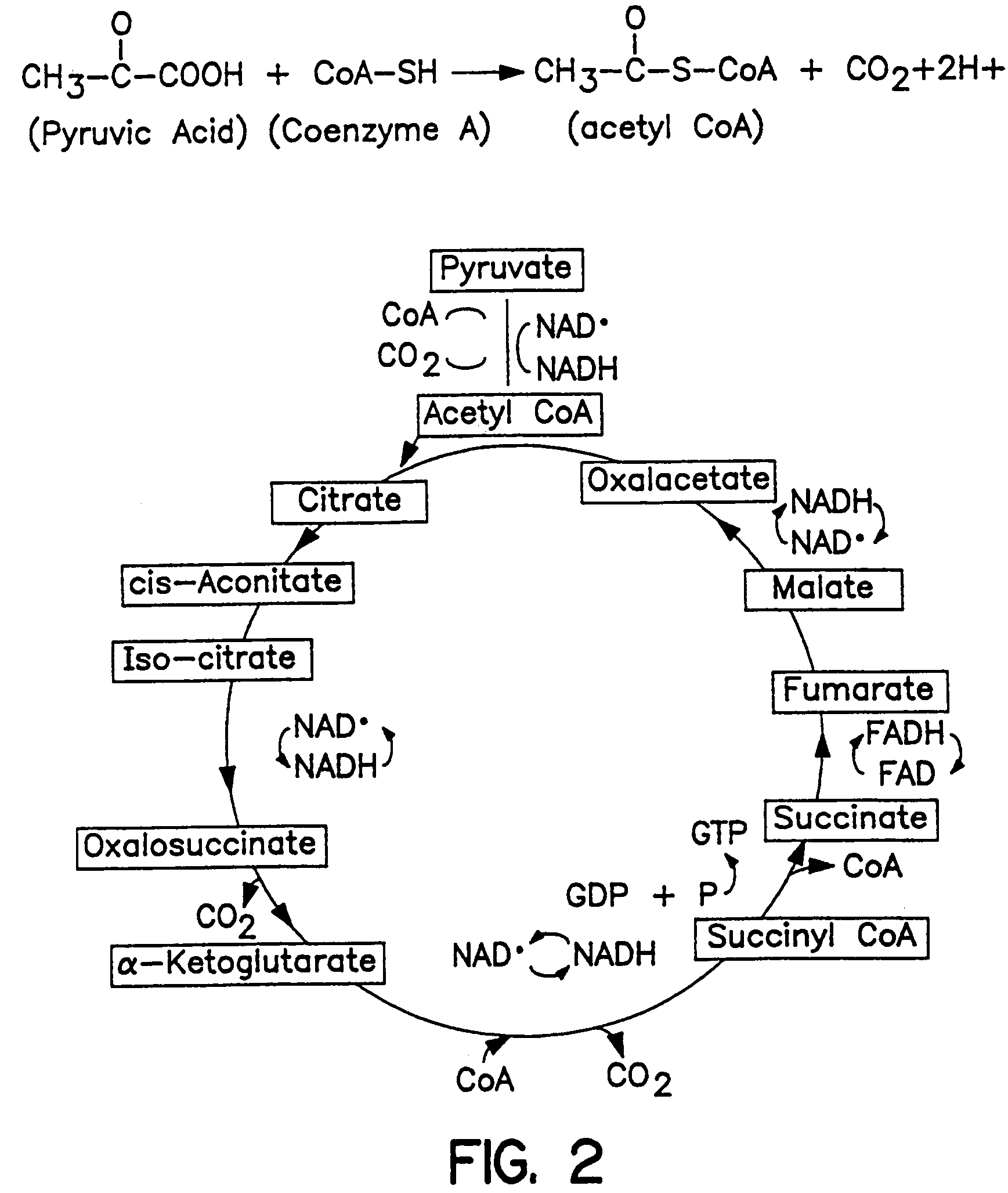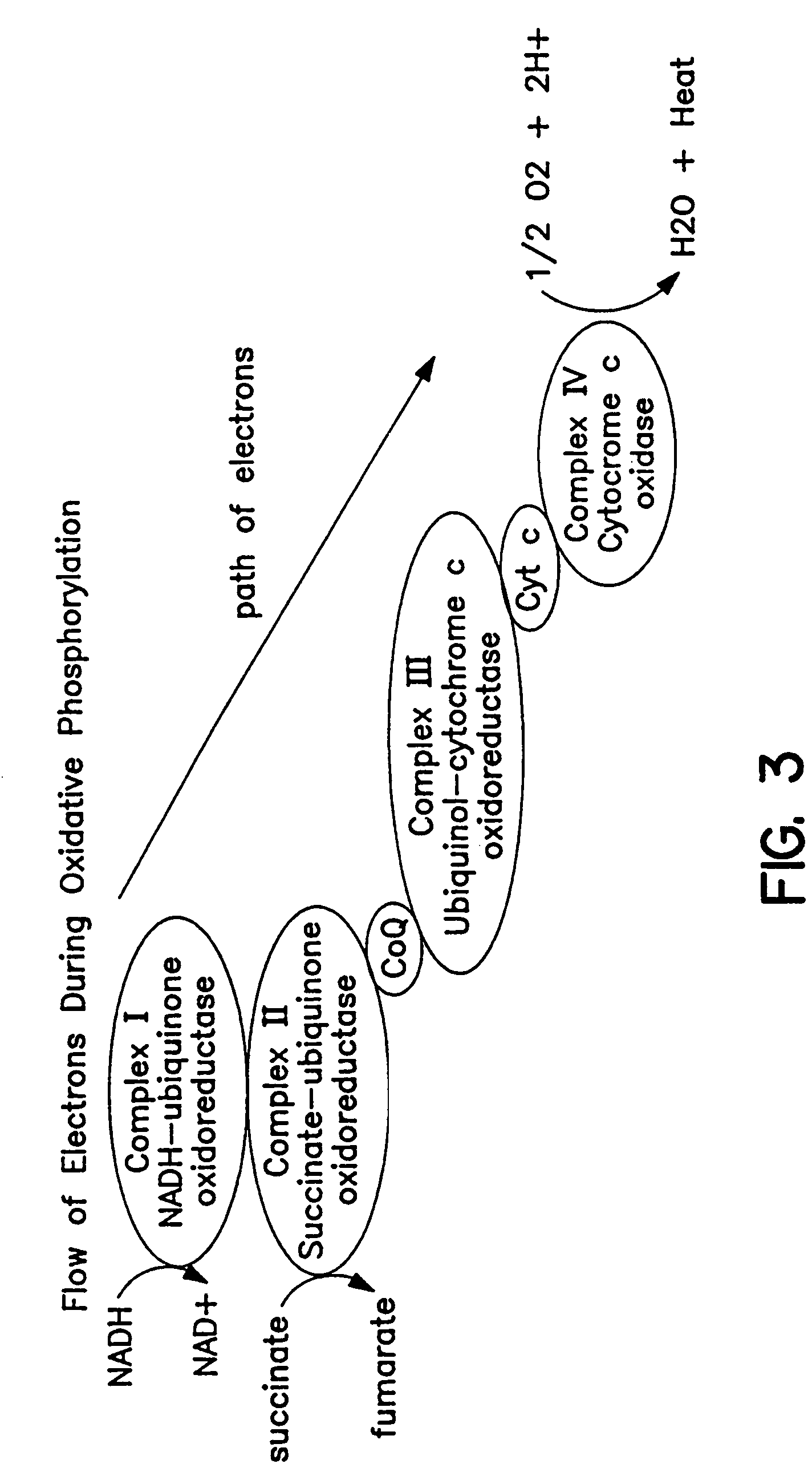Chemical induced intracellular hyperthermia
a hyperthermia and intracellular technology, applied in the field of therapeutic pharmacological agents, can solve the problems of reducing the effect of oxidation and loosening of plaque, and achieve the effects of enhancing intracellular heat and free radicals, enhancing energy metabolism and heat production, and enhancing safety and effectiveness
- Summary
- Abstract
- Description
- Claims
- Application Information
AI Technical Summary
Benefits of technology
Problems solved by technology
Method used
Image
Examples
example 1
Method of Using DNP with Glucagon to Treat Parasitic Infections, Hydatid Disease of the Liver
[0116]History: A 52 year old white Swiss male, European fox hunting dog trainer, presented with right upper quadrant pain and vomiting. Past history revealed he had hepatic “cyst” surgery 2 years ago. Preoperatively, he was treated with albendazole. Only one dose of albendozale was given because of a “near death” anaphylactic reaction. He denied history of weight loss, pulmonary, cardiac, neurologic or thermoregulatory problems. There was no history of alcohol abuse or medication use. The patient was adamantly opposed to any further surgery or treatment with albendazole or mebendazole.
[0117]Physical Examination Weight=90 Kg; height=177.8 cm; BP=140 / 80; HR=76 & reg; Resp.=18 min; T=37.0
[0118]An old well healed scar consistent with prior hepatic surgery was present. Physical exam otherwise was unremarkable.
[0119]Laboratory studies: EKG, chest X-ray, blood panel, including serum electrolytes, t...
example 2
Method of Using DNP to Treat Viral Infections, HIV Disease
[0124]History: A 38 year old white male, past intravenous heroin addict, was diagnosed approximately 8 years ago with HIV by ELISA and positive Western blot for HIV p24 and gp41 antigens after presenting with weight loss and thrush. His history included repeated treatment for candidiasis, pneumocystis carinii, and various subcutaneous abscesses. Past medications included sulfamethoxazole, ketoconazole, fluconazole, zidovudine, didanosine and various other antibiotics. For the past year and a half he has been on highly active antiretroviral therapy (HAART) with various HIV protease inhibitors combined with thymidine, purine or cytosine nucleoside and nonnucleoside inhibitors. He was unable to tolerate nelfinavir because of diarrhea. Ritonavir caused intractable vomiting and abdominal pain. Current medications include indinavir, zidovudine and lamivudine. Review of the most recent viral load (VL) and CD4+ lymphocyte counts show...
example 3
Use of DNP to Treat Bacterial Infections, Lyme Disease
[0132]History: A 33 year old white female with a textbook case of Lyme borreliosis related being bitten by a tick and developing a pathognomonic erythema migrans on her right anterior thigh. The rash resolved within two weeks but 3 months later she developed verbal memory impairment, migratory arthritis of the knees, ankles and tibias. Fibromyalgias, tachycardias and a left sided Bell's palsy ensued. Constitutional symptoms of fatigue, malaise and severe depression caused her to undergo psychiatric care for 1½ years before she was definitively diagnosed with chronic Borrelia burgdorferi infection. She was treated with ceftriaxone, 2 g intravenously every 12 hours for 14 days. Four months after apparent improvement she developed photophobia, headaches, pronounced memory loss, depression, dysesthesias and a painful, swollen left knee joint. Repeat ELISA, Western blot and DNA-PCR were all positive for B. burgdorferi. Spinal tap show...
PUM
| Property | Measurement | Unit |
|---|---|---|
| temperature | aaaaa | aaaaa |
| temperatures | aaaaa | aaaaa |
| temperatures | aaaaa | aaaaa |
Abstract
Description
Claims
Application Information
 Login to View More
Login to View More - R&D
- Intellectual Property
- Life Sciences
- Materials
- Tech Scout
- Unparalleled Data Quality
- Higher Quality Content
- 60% Fewer Hallucinations
Browse by: Latest US Patents, China's latest patents, Technical Efficacy Thesaurus, Application Domain, Technology Topic, Popular Technical Reports.
© 2025 PatSnap. All rights reserved.Legal|Privacy policy|Modern Slavery Act Transparency Statement|Sitemap|About US| Contact US: help@patsnap.com



